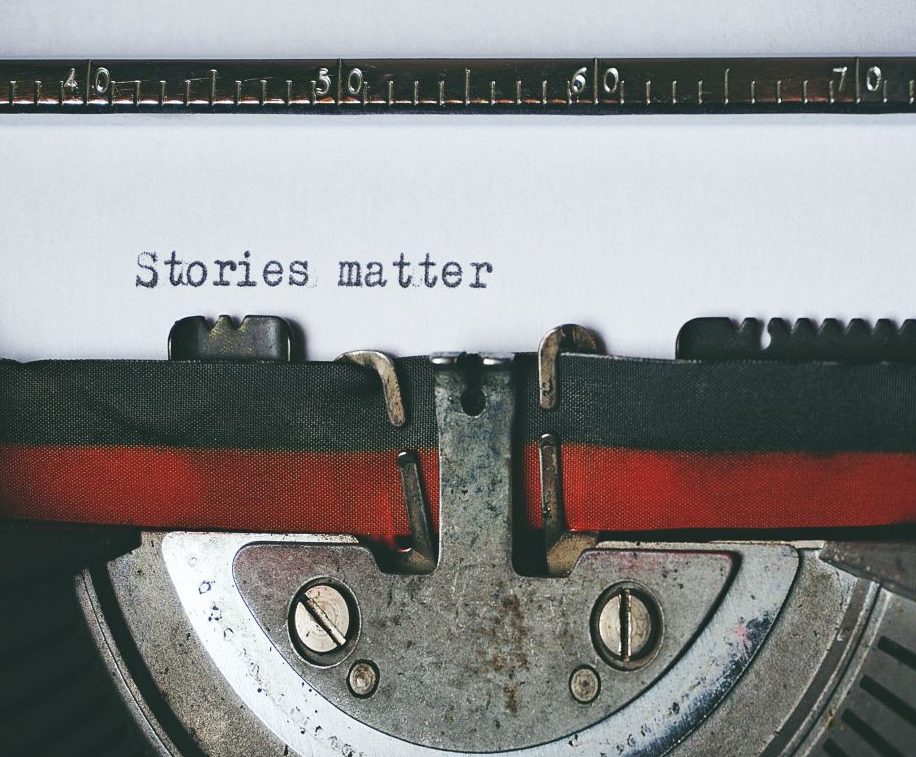Advertising surrounds us every day. The multitude of messages allows us to list only some examples - especially those that attract attention and allow you to remember each other. To achieve such an effect, you should carefully analyze all elements of the advertising message and match the message to the brand. But how to do it?
- What is an advertising message?
- Storytelling, or how to talk about a brand
- The most important elements of the advertising message
- What is the purpose of the advertising message?
- Social advertising and its tasks
- Elements of the advertising message on the example of a well-known brand
- Features of the advertising message
- Selection of elements of the advertising message
- The AIDA model in an advertising message
Not every argument that motivates you to buy will be relevant to a specific advertisement. So you need to find an interesting and catchy idea on how to attract the attention of your audience, and at the same time remember about the rules of ethics. Here's what to use.
What is an advertising message?
There is no perfect recipe for advertising success. Sometimes it takes a brilliant idea and sometimes it takes a bit of luck. Certainly refined in every detail advertisement increases our chances of success.
An advertisement is a message to recipients, most often containing slogan, content and graphics. Regardless of whether the graphics are moving or not, the visual aspect attracts the attention of the audience first. Of course, one should not expect huge success without a well-chosen, short slogan that carries a certain message or sentence. Most often it concerns the benefits that the consumer will receive at the time of purchase.

Depending on the purpose, the advertisement may be about a product or service, additional benefits, such as a price reduction or a bonus that the brand offers for purchase. Many contemporary advertising messages refer to the brand as a well-coordinated team, which is presented in the graphics. This is to get closer to customers and show them a bit of the backstage of the company's operation. Many advertising elements are also part of a larger awareness or image campaign that aims to show customers the values that are important to the company. There can be plenty of ideas for an interesting advertisement, it is enough to define its purpose and the target group to which it will be directed. Then, with a little creativity, even a simple message can create a brilliant advertisement.
Storytelling, or how to talk about a brand
Remember that each advertisement has a common goal - to elicit a certain reaction from the recipients. The fact that advertising is a persuasive message that engages the recipient gives the brand a lot of opportunities to reach the emotional sphere of consumers, as well as their dreams, attitudes and all aspirations.
An important element of the advertising message is storytelling, which tells a story about the brand. Due to the fact that such a story has its beginning and end - in the form of a summary, usually persuasive - it is easier for the recipients to remember it and add their needs to this story. Storytelling so it allows:
- highlight the brand;
- gain audience interest and engagement;
- increase the motivation to buy;
- build a bond with your customers.

The most important elements of the advertising message
In order to implement an interesting and, above all, effective advertisement, you need to create an excellent plan that will include the most important elements of the advertising message, i.e. answers to the following questions:
- what will be the main topic of the ad?
- what is the target group advertising, or who will it be addressed to?
- where and in what form will the ad be placed?
- What is the purpose of the advertisement - is it supposed to increase the awareness of the recipients about the brand through a new product or service, or will it rather be focused on promotion or sale?
In order to answer the above questions, it is necessary to carefully analyze the recipients - their expectations, interests, needs, and behavior in specific situations. Remember that consumer groups differ significantly from each other, so each message should be individually tailored. So it's better to target more ads to specific target groups than one ad to all audiences.
What is the purpose of the advertising message?
Generally speaking, through an advertising message, we want to present the best our brand can offer to customers. It can be a one-time promotion, a completely new collection of products, a unique offer, a tailor-made service or the total value of the brand.
Depending on the purpose of the ad and the target audience, it may have the following context:
- humorous - it will certainly be easier to remember and even surprising;
- questioning - syntax for some reflection;
- imperative - indicates a specific behavior;
- declarative - presents some arguments;
- informing - communicates information about products and services.

Social advertising and its tasks
Remember that there is one more, separate type of advertising, namely social advertising. Usually, it defines a certain social problem and its task is to sensitize recipients to this situation. Social advertising can be controversial - it has its own rules and aims to attract the attention of the public. Most often it manifests itself in an interrogative, imperative or declarative form, and its message should absolutely not be passive. Social advertising influences the emotions of recipients and shows a high degree of persuasion.
Elements of the advertising message on the example of a well-known brand
Let's take a closer look at one of the most up-to-date advertisements to show the way it is presented in an extraordinary way. It is certainly memorable, but does it have only positive connotations? We are talking about advertising the Media Expert chain and the cult slogan "We turn on low prices". For many audiences, this ad has become a kind of trauma due to the frequency of publication. What was supposed to be a hit, was surely remembered by the audience, but after time it became unbearable.
Even though it is a large advertising campaign with various messages in the form of a moving visualization, it always carries the same message "We turn on low prices". The pleasant, melodic form is friendly and cheerful. It is surely remembered from the very first melodic line. It has a slogan, content and moving graphics, so it would seem that everything is correct. Occasionally, however, the frequency of the presentation itself may be at fault. When we hear the same melody many times a day, we can get tired of it.
Are you looking for ideas for engaging advertising?
We know it - check us out!
Features of the advertising message
There are many features that characterize an effective advertising message. There will be a few that will work in specific cases and specific target groups, but you can indicate those that will be universal and at the same time will allow you to be successful. And that's what we want to focus on. An effective advertising message can be built on the basis of the SUCCES principle.
- Simplicity assumes that the recipient receives a maximally simplified message that is understandable and clear. The recipient's brain is overloaded with information, so it loves and easily assimilates information that is as simple as possible. Of course, this does not mean that the advertisement should carry little information, it is rather that it should accurately communicate a certain value for the customer.
- Unexpectedness is an element that is supposed to make the message fall into the memory of the recipient. At the very beginning, it should break the routine, and even better if it does not follow the usual patterns. The modern recipient sees the same ads every day and passes the same banners, and his eyesight successfully ignores them. An advertising message that surprises and attracts attention at the same time.
- Concreteness, because our brain has been programmed to receive only key information and the most important elements. If we overload the message, it may turn out that the recipient will miss the most important thing. Specificity also concerns the selection of appropriate words, the less abstract it is, the easier it is to reach the recipient.
- Credibility - this is not about rigid data, although it has been established that this is the easiest way to authenticate the message. To best illustrate the problem, let's use an example. In 1981, Ronald Reagan was fighting for the title of president, and in his campaign he referred to unemployment. He could, of course, operate with numbers, and yet instead he asked the question: are you living better than 4 years ago? The credibility of the message was preserved, but Reagan operated with an easy-to-remember cornet instead of a thousand numbers that everyone would forget about.
- Emotions are one of the most important features of an advertising message. It is them that guide our behavior in everyday life, often motivate us to act, and at the same time make it easier to remember the message. There is no good advertisement without emotions.
- Stories - storytelling is like a good and addictive book. An advertising message that tells a story has the same effect on the recipient.
Selection of elements of the advertising message
The selection of the elements of the advertising message cannot be accidental. For example, the communication channels that the sender wants to use are important. Different elements will have to be included in a TV advertisement and other elements in a radio advertisement. This is due to certain limitations imposed by individual communication channels. Returning to the aforementioned examples, it is easy to notice that advertising on the radio cannot manipulate the image, so the whole thing must focus on the sound layer. You also need to take into account the target group, ranges and goals that the advertising message is to achieve.

On the other hand, any good advertising message must consist of three basic elements that will define its structure.
- The method of inference - should the conclusions be drawn by the sender or the recipient of the message? It should be especially emphasized here that drawing conclusions too explicitly and suggestively does not have a very encouraging effect on the recipient, and often even brings the opposite effect. The problem is exacerbated when recipients do not have much confidence in the sender or when the conclusions are too obvious.
- A way of arguing that can be divided into one-sided and two-sided. The one-sided advertising message will contain only these positive features of the product, assuming that there is no need to inform the recipient about any disadvantages. This method of argumentation is used when the recipients have full confidence in the sender. In turn, in a two-way message, the recipient gains two parallel shots, i.e. advantages and disadvantages. It is used when sending a message to distrustful recipients or educated people. Presenting the flaws works like taking the argument out of hand.
- The order in which the arguments are passed. Strong arguments presented at the very beginning create a surprise effect, while placing them at the very end emphasizes the effect of the last word. The surprise effect is usually used in a one-sided argument, and the last word effect in a two-sided argument.
The AIDA model in an advertising message
AIDA is an acronym for: Attention, Interest, Desire, Action. The AIDA model determines how advertising affects the consumer. When creating an advertising message using this technique, you must remember that the sequence plays a very important role. It cannot be freely manipulated, even if it seems that the final effect will be much better.
Attention, that is, focusing the attention of the recipient, is the use of phrases that immediately arouse interest. Think about how many times you've heard an advertisement that starts with the words "we deal with ...", "our company offers". There is nothing innovative about the fact that a company offers a service or product, which causes the recipient's attention to blur at the very beginning. But if you arouse his interest from the very beginning, the effect will be quite the opposite.

Interest is to interest the advertiser in your offer. As long as you have correctly defined your target group, the ad gets people who are actually interested in what you can do for them, and it's a great time to apply storytelling. Outline the problem the recipient is struggling with, show that you fully understand it and suggest how you can solve it.
In the AIDA model, Desire assumes that the recipient realizes that they want to take advantage of the offer, so your role is to emphasize its uniqueness. Focus on showing that you are ideally suited to the needs of your consumer. You can use the language of benefits for this purpose and clearly mark the benefits.
Action is a call to action. It is a kind of invitation to take advantage of the offer. However, remember that it must fit into the target group. The law firm is unlikely to use the loose return directly to the recipient in the "let's get to know each other" style. The CTA must be natural to whoever you are addressing the message to.

